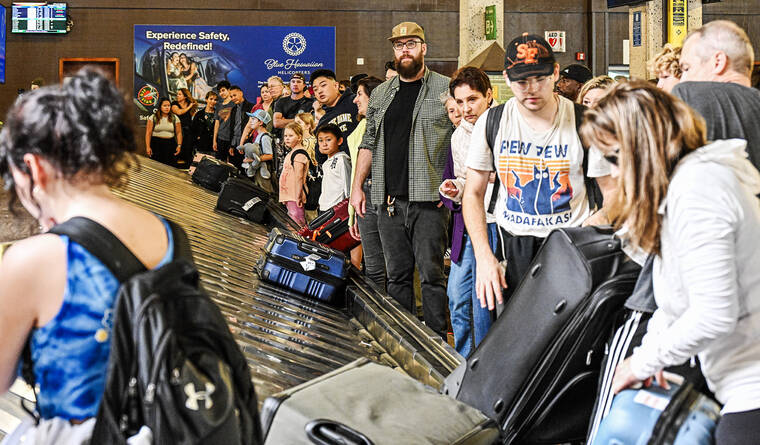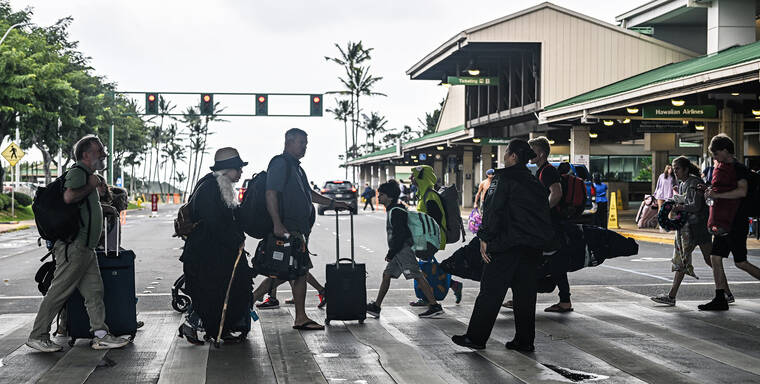It’s beginning to look a lot like a hectic holiday travel season, but it might go relatively smoothly if the weather cooperates.
Travel over Christmas and New Year’s tends to spread out over many days, so the peaks in the U.S. are likely to be lower than they were during the Thanksgiving holiday. That is making airlines and federal officials optimistic.
But the debacle at Southwest Airlines over Christmas last year should guard against overconfidence. Just this week, the Transportation Department announced a settlement in which Southwest will pay $140 million for that meltdown, which stranded more than 2 million travelers.
So far this year, airlines have canceled 1.2 percent of U.S. flights, down nearly half from 2.1 percent over the same period last year. Cancellations were well below 1 percent during Thanksgiving, according to FlightAware.
“I don’t want to jinx us, but so far 2023 has seen the lowest cancellation rate in the last five years,” Transportation Secretary Pete Buttigieg said Tuesday. He added, however, that winter weather “will certainly be a challenge in the next few weeks.”
Canceled flights surged last year, as airlines were caught short-staffed when travel rebounded from the pandemic more quickly than expected. Since then, U.S. airlines have hired thousands of pilots, flight attendants and other workers, and the cancellation rate has come down.
It was so far, so good for most U.S. travelers Thursday, a day ahead of an expected peak Friday.
“Honestly it was great. I flew standby, which the week of holiday, you know, is tricky to do, and I made it on the second try. So I’m feeling really lucky. I feel like Santa is real, he’s good, he’s out there,” said Maggy Terrill, after flying from New York City to Chicago O’Hare International Airport to spend Christmas with family in southern Illinois.
In Europe, some travelers weren’t as lucky.
High winds from a storm named Pia disrupted flights, trains and road travel in the Netherlands, Denmark, Germany and northern areas of the U.K.
Nearly a third of the flights arriving and departing Amsterdam Airport Schiphol were canceled Thursday, and hundreds of flights were delayed, according to Flightaware. Copenhagen Airport in Denmark warned that weather conditions posed a “risk of delays and cancellations,” especially on Thursday night. British Airways grounded two dozen flights, British broadcaster Sky News reported.
Adding to frustrations, workers at the undersea tunnel between Britain and France held a surprise strike for several hours Thursday that ended when Eurotunnel reached an agreement with union representatives.
Eurostar, which operates passenger train services from London to continental Europe, said services will not resume until Friday. The company said it would run six extra trains between Paris and London into the weekend. Eurotunnel Le Shuttle, which runs vehicle-carrying trains on the same link underneath the English Channel, began resuming services Thursday night.
Ross Haynes, 31, told the Press Association news agency he was traveling to visit family members in Manchester when his train was canceled.
“I was on the train, headphones in, podcast on and ready to go. Suddenly, everything was canceled and we were turfed off,” Haynes said.
After struggling with cancellations and other disruptions last year, European travel has been smoother this year and more people are expected travel over Christmas and New Year’s, said Mike Arnot, spokesman for Cirium, an aviation analytics company. Still, about 3 percent of flights within Europe have been canceled in so far in December, and nearly 30 percent have been delayed, according to Cirium.
Globally, air travel has not fully recovered from the COVID-19 pandemic, but it is expected to surge over the holidays compared to last year. Airlines have sold 31 percent more tickets for international arrivals to global destinations between Dec. 21 and Dec. 31 compared to the similar period last year, according to travel data firm FowardKeys.
The U.S. Federal Aviation Administration says it is creating more air-traffic routes, especially along the East Coast, to help keep planes moving over the holidays.
Over the past year, airlines have blamed many of their delays on a shortage of FAA air traffic controllers that slows down traffic. The agency says it has been hiring and now has 10,700 certified controllers.
AAA is forecasting that 115 million people will go 50 miles or more from home between Saturday and New Year’s Day. That is a 2 percent increase over the auto club’s forecast last year, although it would fall short of the record set in 2019.
Most of those people will drive, and they will save a bit on gasoline, compared with last Christmas. The nationwide average Wednesday was $3.08 a gallon, down 23 cents from a month ago and 6 cents from this time last year, according to AAA.
The busiest days on the road will be Saturday and next Thursday, Dec. 28, according to transportation data provider INRIX.
The Transportation Security Administration expects that the busiest days for air travel will be Thursday, Friday and New Year’s Day. TSA expects to screen more than 2.5 million travelers each of those days — that’s still far short of the record 2.9 million that agents screened on the Sunday after Thanksgiving.
Flying in the U.S. is already surpassing pre-pandemic levels. The TSA has screened 12.3 percent more travelers than it had by this time last year and 1.4 percent more than in 2019. December is running about 6 percent above the same month last year.
Whether flying or driving, travelers should be keeping an eye on the weather forecast.
A Pacific storm pounded parts of Southern California on Thursday with heavy rain and street flooding. AccuWeather forecasters say rain storms could hit the Pacific Northwest and the southern Plains states including Texas later this week, but things look brighter for population centers — and key airports — in the Northeast.
•••
AP reporters Alexandra Olson in New York, Kelvin Chan in London and Melissa Perez Winder in Chicago contributed to this report.






